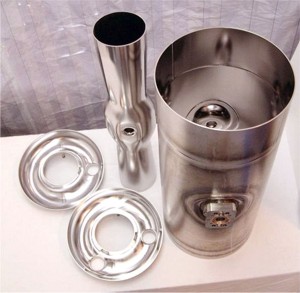Accelerator R&D
 Our accelerator R&D program focusses on applying
superconductivity RF techniques to heavy ion accelerators and
on producing and accelerating radioactive
beams. Our accelerator physicists are conducting a broad range of R&D to establish key technologies for the future Facility for Rare Isotope Beams (FRIB). The ATLAS program continues to optimize its operations and develop new linear accelerator technology to provide beams having higher intensity with excellent quality. We review operational issues continuously and enhance the facility’s capabilities frequently. We are investigating technical and research issues relating to acceleration of beams of short-lived nuclei.
Our accelerator R&D program focusses on applying
superconductivity RF techniques to heavy ion accelerators and
on producing and accelerating radioactive
beams. Our accelerator physicists are conducting a broad range of R&D to establish key technologies for the future Facility for Rare Isotope Beams (FRIB). The ATLAS program continues to optimize its operations and develop new linear accelerator technology to provide beams having higher intensity with excellent quality. We review operational issues continuously and enhance the facility’s capabilities frequently. We are investigating technical and research issues relating to acceleration of beams of short-lived nuclei.
Argonne Tandem-Linac Accelerator System - A National User Facility
A DOE-designated national accelerator facility for research in nuclear physics, ATLAS employs beams of low-energy heavy ions. The accelerator provides high-quality beams of all the stable elements up to the heaviest, uranium. It also can provide selected beams of short-lived nuclei. ATLAS is based on a technology developed at Argonne that employs superconducting RF accelerator cavities. An accelerator improvement project now nearing completion will increase the facility’s beam energy by about 25%.
Capitalizing on R&D for beams of rare isotopes, we have begun a significant upgrade to ATLAS called the Californium Rare Ion Breeder Upgrade (CARIBU). CARIBU will make available hundreds of neutron-rich isotope beams after they have been produced through th spontaneous fission of californium, captured in a gas cell, and accelerated with ATLAS.
 Facility for Rare Isotope Beams
Facility for Rare Isotope Beams
Both the 20-year facilities plan of DOE’s Office of Science and the broad nuclear science community place high priority on a new facility to provide unparalleled access to beams of exotic atomic nuclei beyond the stable isotopes that exist on Earth. The facility envisioned combines
- a high-power driver accelerator to produce unstable (rare) isotopes, which do not exist naturally because they have short half-lives typically ranging from milliseconds to days, and
- a second accelerator to deliver high-quality beams for experiments.
Unstable isotopes outnumber stable isotopes by more than ten to one, and the systematic study of such rare isotopes is one of the most exciting frontiers in fundamental physics. A rare isotope facility producing these nuclei in unprecedented quantities and capable of accelerating them as beams at unprecedented intensities would answer many pressing questions, including the following:
- What is the full list of nuclei, both stable and unstable, existing in nature?
- How were the chemical elements produced in the cosmos?
- How do stars burn their nuclear fuel?
- Does the current standard model of particles and interactions pass the tests made possible by the new facility?
In addition, the envisioned facility would produce radioactive isotopes enabling valuable new applications for science, technology, medicine, and national security.
 In December 2006 the Rare Isotope Science Assessment Committee (RISAC) of the National Research Council strongly emphasized the importance of this new science. RISAC concluded that this science is “a vital component of the nuclear science portfolio in the United States” and that “failure to pursue a U.S. [facility for rare isotope beams] would likely lead to a forfeiture of U.S. leadership in nuclear-structure-related physics and would curtail the training of future U.S. nuclear scientists.” Examining the prospective science in an international context, RISAC concluded that “the science addressed by a rare-isotope facility, most likely based on a heavyion driver using a linear accelerator, should be a high priority for the United States. The facility for rare-isotope beams envisaged for the United States would provide capabilities unmatched elsewhere that would help to provide answers to the key science topics.” Argonne has played a leading role in research and development for key technologies related to FRIB.
In December 2006 the Rare Isotope Science Assessment Committee (RISAC) of the National Research Council strongly emphasized the importance of this new science. RISAC concluded that this science is “a vital component of the nuclear science portfolio in the United States” and that “failure to pursue a U.S. [facility for rare isotope beams] would likely lead to a forfeiture of U.S. leadership in nuclear-structure-related physics and would curtail the training of future U.S. nuclear scientists.” Examining the prospective science in an international context, RISAC concluded that “the science addressed by a rare-isotope facility, most likely based on a heavyion driver using a linear accelerator, should be a high priority for the United States. The facility for rare-isotope beams envisaged for the United States would provide capabilities unmatched elsewhere that would help to provide answers to the key science topics.” Argonne has played a leading role in research and development for key technologies related to FRIB.
![[Argonne Logo]](/images/argonne_header_logo.jpg)
![[DOE Logo]](/images/header_doe.gif)